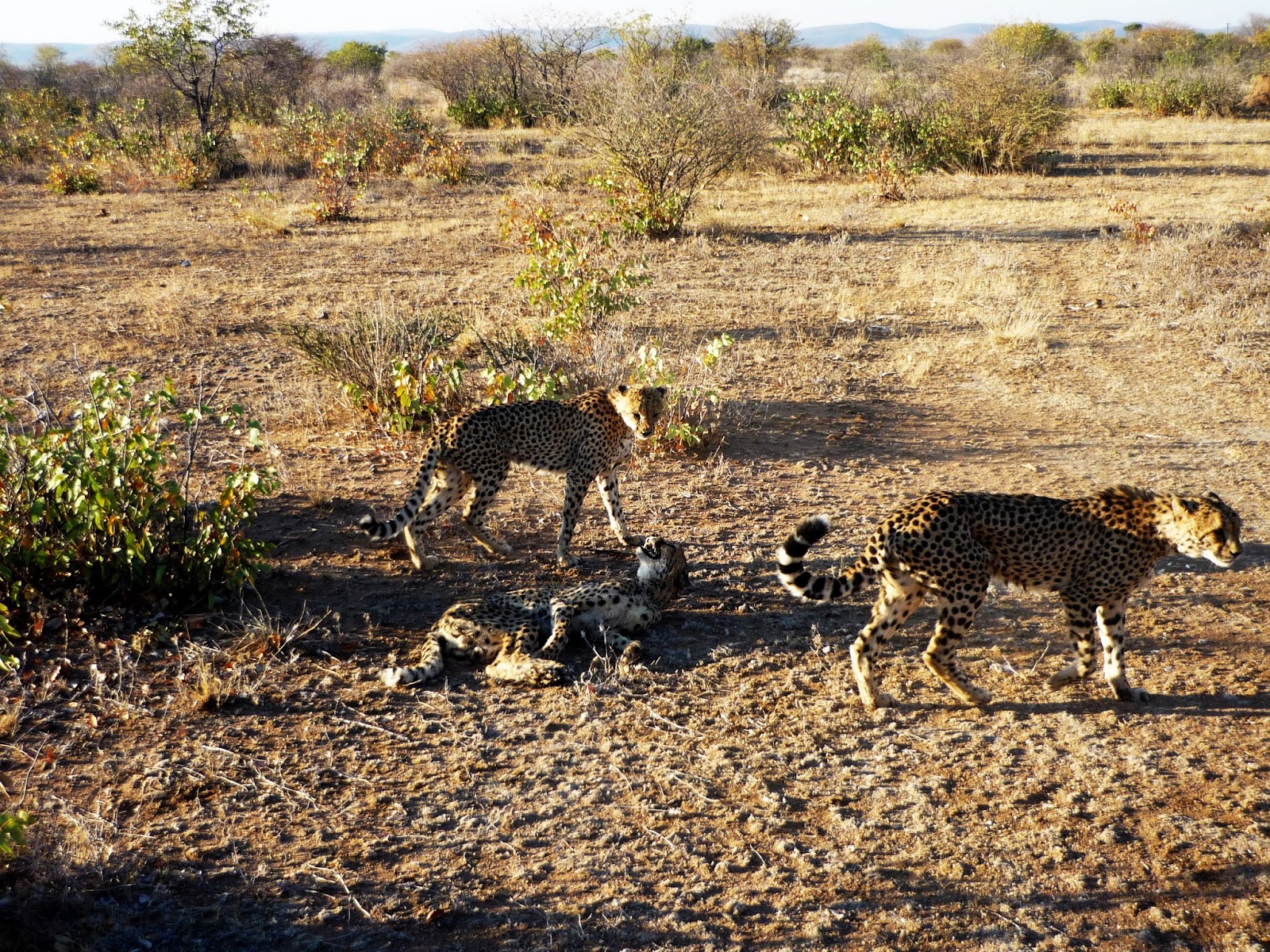Anyone who knows me knows that I am not terribly fond of cats. Or perhaps I am terribly unfond of cats. Dogs- love 'em. Otters- adorable. Koalas- how can you not? But my response to cats is, at best, Meh, and more often, Mraaaahah, someone get that fleaball away from me before it gives me endless nights of allergic-reaction misery and pain.
That being said, even I have to admit: Cheetahs are pretty darn cute cats.
Cheetah got a flip-flop
Today we visited the aptly named Cheetah Park, which is really just the house and private grounds of some guy who adopted a cheetah cub decades ago (after shooting the mother), who now has 5 or so grown cheetahs roaming around his fenced yard, socializing with the 3 dogs.
Greeting us at the chain-link gate
Backyard party
In Namibia, cheetahs are considered pests to farmers, and are allowed to be killed at whim. Despite their top speeds (72mph) and non-retractable claws, cheetahs are poor predators and are constantly being chased away from wild hunting grounds by more dominant animals like lions or hyenas. Thus, they often turn to farms, where carrying off a chicken is an easier feat. Thus, the farmers shoot them.
However, when asked about the legality of the situation (you're not allowed to own or breed cheetah's in Namibia), our host didn't have much to say.
Like cats, they can be very playful. If "playful" actually means "They may bite or scratch you, but don't worry- you probably won't bleed much, and they'll like you afterward." -Real (paraphrased) quote.
Rising above it
One of us looks more relaxed than the other
Aside from the backyard, there is another large enclosed compound on the property, where another 14, less-domestic cheetahs are kept, through which you can do a game-drive in trucks to see them being fed. As they wait for the large chunks of donkey meat to be tossed from the trucks, they skirmish among themselves to determine the roles of dominance and submission.
Alphas teaming up to put a beta in his place
Leaving him to quiver in his powerlessness
The beta cats sit and give out high-pitched yipping sounds (a submissive bark), and the dominant cats attach them in order to assert the point that they will be the first to eat.
Grrrrrrrrrr
But when the meat's flying through the air, I can't see any difference between alpha and beta. It's all claws and teeth and spotted fur and fighting for each and every scrap. No matter how many weeks or years of each cheetah getting its own guaranteed dinner, nature still worries that the weak will starve.
Dinner


















































